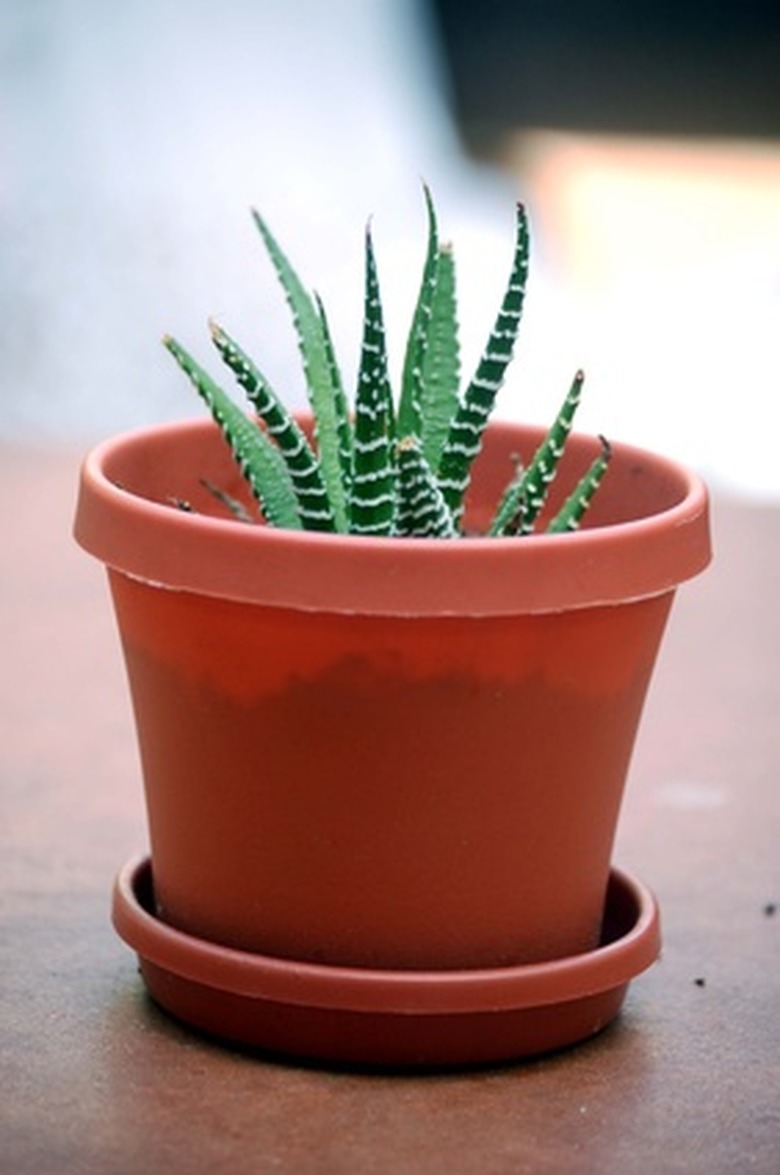Bug Bombs & House Plants
When it comes to killing the bugs in your home, you may decide to use a bug bomb instead of calling an exterminator. Bug bombs generally contain an insecticide and a pesticide to help kill the bugs in your home. They are available in a number of different brands. Alhough people and pets are required to leave the home when they are in use, the chemicals in bug bombs pose no threat to your houseplants.
Houseplant Pests
Houseplant Pests
Houseplants can become infected with pests. According to the Colorado State University Extension office, the greenhouse whitefly "is a common pest of several houseplants such as poinsettia, ivy, hibiscus, and lantana." The whitefly sucks sap from the plant it attacks. High infestations may cause your plant to prematurely drop leaves and wilt. Other houseplant pests include spider mites and aphids.
Bug Bombs
Bug Bombs
Bug bombs are used to treat a number of household pests from fleas to mosquitoes. They are effective because they contain an insecticide, commonly a pyrethrin, and a pesticide, usually piperonyl butoxide (PBO). Pyrethrins and PBOs are often found in common houseplant sprays as well as bug bombs. According to the Colorado State University Extension, pyrethrins are "fast acting" with low toxicity and "short persistence."
Pyrethrins
Pyrethrins
A natural pyrethrin comes from a certain type of daisy. Synthetic pyrethrins are called pyrethroids and fall under different names depending on their manufacturer. Tetramethrin is one such ingredient. According to the U.S. Environmental Protection Agency, target pests for this chemical include "flying and crawling insects such as wasps, hornets, roaches, ants, fleas, and mosquitoes." The chemical is registered with the EPA and can be applied "on house plants" without any harm being caused.
Piperonyl Butoxide
Piperonyl Butoxide
Piperonyl butoxide is also registered with the EPA. The EPA explains PBO "acts as a synergist. Synergists are chemicals which, while lacking pesticidal properties of their own, enhance the pesticidal properties of other active ingredients including pyrethrins." This is why bug bombs contain both ingredients–both are needed to create an effective, long lasting treatment against bugs. According to the University of Missouri Extension office, PBO is a common ingredient in many pesticides, including those prescribed for houseplants.
Considerations
Considerations
Although bug bombs are safe for your houseplants, there are some considerations to humans. If you come into direct contact with the spray, cleanse with soap and water because it can irritate skin. If your eyes become contaminated, cleanse with water or an eye wash. When storing the product, keep it away from flames and heat which can reach an excess of 130 degrees F. Bug bombs are harmful if ingested or inhaled. Rooms should be ventilated for at least 30 minutes before returning. Countertops need to be wiped down and hands should be washed after use.
References
- Colorado State University Extension: Managing Houseplant Pests
- U.S. Environmental Protection Agency: June 23, 2008 Reregistration Eligibility Decision for Tetramethrin
- University of Missouri Extension: Managing Whiteflies on Indoor and Outdoor Plants
- U.S. Environmental Protection Agency: Piperonyl Butoxide Reregistration Eligibility Decision
